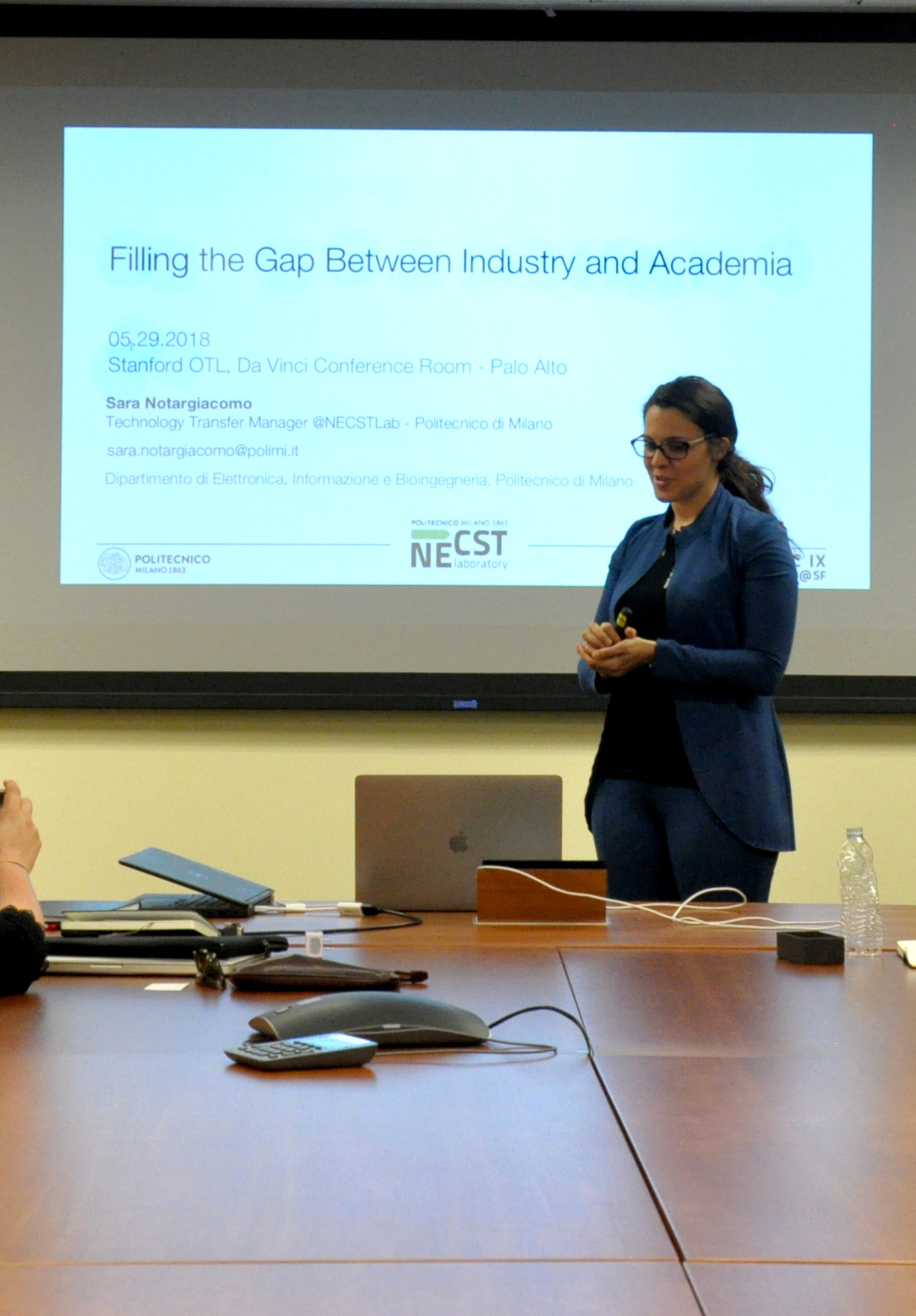Scientific research and industry are often perceived as a dichotomy, two inconciliable world dumb to never understand each other. However, when scientific research is not successfully transferred to the market, it does not fully leverage its innovation potential and does not impact on people’s lives.
By Sara Notargiacomo
Technology Transfer Manager @NECSTLab, Politecnico di Milano
The main reason of such a gap can be found in their different time frame and incentive system. Indeed, the long period perspective of academic research is unsuitable to match with companies short-term necessities and go-to-market strategies.
Furthermore, researchers do not always foresee the true potential of their research projects because they lack of business and commercialization skills. Moreover, they are often asked to postpone the publication of their work in order to comply with patent application novelty requirements. Eventually, such circumstances results to be a barrier for successful technology commercialization.
In order to fill such gap of competences, research laboratories are supported by technology transfer offices who are responsible for all the activities such as corporate collaboration, patents and spin-off, which contribute in bringing research to the marketplace. However, I believe that traditional tech transfer process begins far too late, when researchers already achieved their outcomes. As a consequence, the valorization strategy does not respond to potential customers needs and desires but has to be adapted to the research frame. The result is a considerable amount of time and resources lost in trying to patent a technology that the market is not interested in. In such circumstances, it is quite easy to understand that patenting and licensing would work only for a small number of technology categories, and in most of the cases patents become only a cost for universities. On the other hand, it is also difficult for companies to know which technologies are available and how to properly value them. Indeed, such patents are often based on unproven technologies, which are not of interest for corporations, and usually present a technology maturity level inadequate for market adoption.
To conclude, there are many factors that have a negative impact on research go-to-market, such as technology stage, type of market and competing technologies. However, we believe that it is possible to improve technology transfer process to reduce time-to-market by adopting rapid prototyping and market testing techniques. Collaborations with companies would allow in such circumstances to test technologies in a relevant environment inside a business case perspective. Moreover, if properly managed, the results obtained would also be useful for research purposes and they would increase researchers’ commitment in contributing to technology transfer process.
Small and Medium sized Companies (SMEs), thanks to their flexibility and their limited resources for acquiring and developing technologies, would be a perfect target for this type of collaboration in a open innovation perspective. Moreover, nowadays complex technologies require economic resources and high specialized skills, that would be otherwise inaccessible for SMEs. In this scenario, it would be possible to create a win-win collaboration: technology transfer would become for SMEs the main channel to acquire technology and knowledge, while academia would have the chance to test and validate their scientific projects from a business perspective. In such context, intellectual property would potentially acquire a new role by becoming the contribution that each partner brings on the table.

